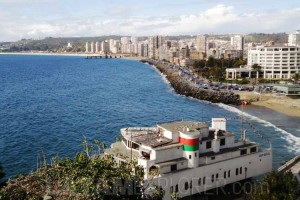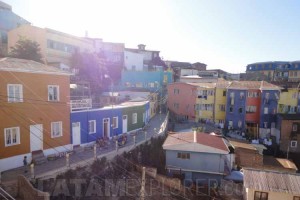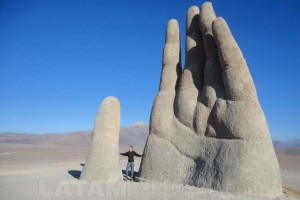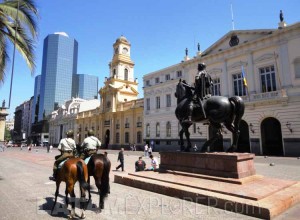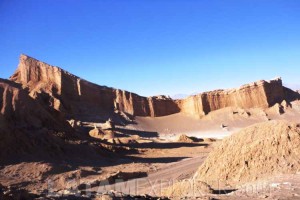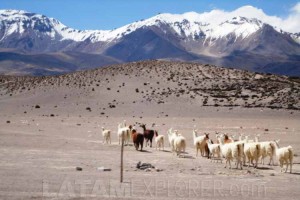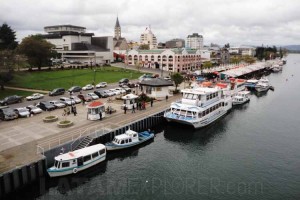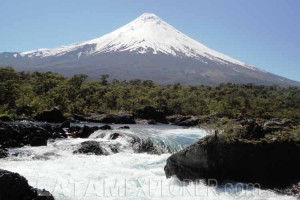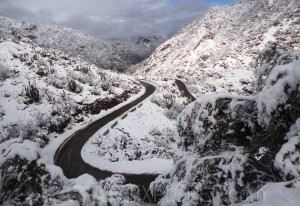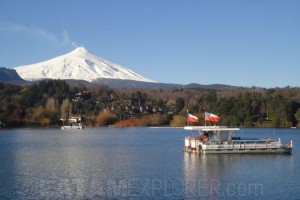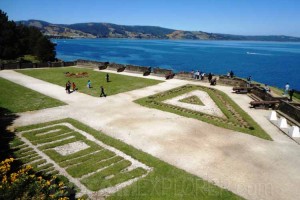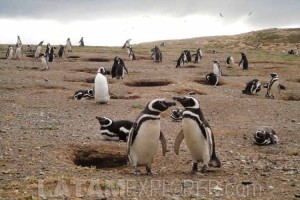Home > Destinations > Chile
Chile
More than 4,200km (2,600mi) separate Chile’s north and south ends, while the east-west distance of its territory doesn’t usually go beyond 200km (125mi). This peculiar characteristic is key in allowing Chile, the “narrowest” country of the world, to present so many contrasting landscapes.
About one third of the national population lives in the Santiago’s metropolitan area. The capital is also the main gateway for those visiting Chile and a good introduction for those coming to the country for the first time. Santiago also presents one of the best development and life quality indexes among Latin-American capitals and large cities. It hosts a series of museums, restaurants, shopping malls and accommodation alternatives, pleasing most tastes. The national capital is not, however, the main reason why most people visit this country. Actually only a few Chilean cities are attractive on their own. The greatest enchantment of this wonderful country is not in the urban scene, but in those corners that are hardest to reach, where contact with nature is more intense.

Nevertheless, before leaving the country’s central region, where Santiago is located, it is worth it to invest some time in order to discover some of the highlights around. A good start could take you to visit precisely one of these few cities that actually deserve being explored. Valparaiso is located 120km (75mi) away from Santiago, which by the way are covered by an excellent highway and are served by buses leaving virtually every five minutes throughout the day. Valparaiso is a harbour city, raised around a beautiful bay and spread over 42 hills, some constituting mandatory stops in order to observe some of the 19th century architecture and marvelous sea views. Neighboring Viña del Mar is the country’s busiest beach resort during the summer season but still a pleasant place to relax by the Pacific coast. On the road between Valparaiso or Viña del Mar and Santiago, the Casablanca Valley is home to one of the most respected wine regions of the country and several of its wineries will be happy to offer you a tour or tasting session of some of their excellent white wines. In the winter months, between June and September, some of the best ski resorts of the southern hemisphere, like Valle Nevado and Portillo, can be easily visited from the capital.

Once you are done with your objectives in the center of the country, it is time to choose which direction to follow next. Given the geographic characteristics of Chile, the decision is pretty simple and fundamentally will have you choosing between heading north or south. This simple decision, however, will have a great impact on what you will get to experience from that moment on. Considering your choice is to start by the north, you will be facing an ever drier terrain, starting with the region around La Serena and the Elqui Valley, where some of the best piscos are made, and heading towards the beginning of the desert in the vicinities of Copiapó. While approaching Antofagasta, the largest city in northern Chile, you will be enduring the driest desert on Earth, the Atacama. The north presents some of the best beaches in the country, although the sea is not warm yet, and breathtaking desert landscapes, particularly around San Pedro de Atacama. This small town became, during the last decades, one of the main touristic destinations in South America and is a very convenient base to explore the salt fields, geysers, lagoons, volcanoes and astronomic observatories of the region; San Pedro is sufficiently interesting and justifies spending a few days or even more than a week around. Still in the north, the city of Iquique also makes for an interesting base to explore an additional set of attractions, like some of the largest geoglyphs in the world and the ruins of old cities once dedicated to the production of saltpeter. Antofagasta, Iquique and Calama (100km, or 60 mi, of San Pedro) are connected to Santiago by air.
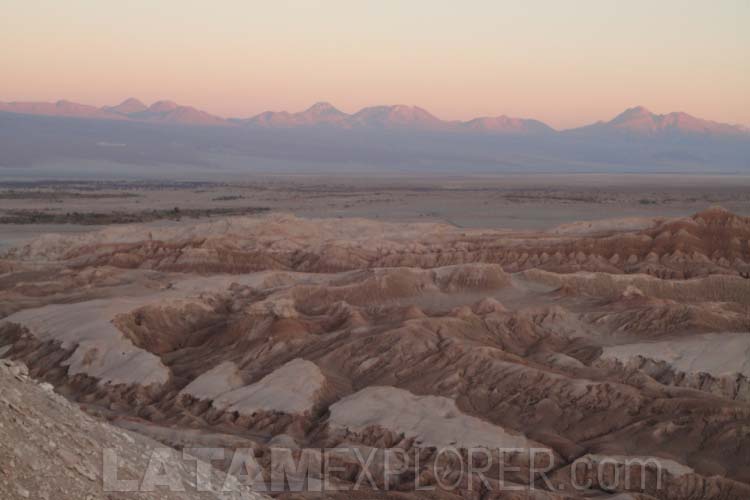
Scenery changes completely heading towards the south of the country. Leaving Santiago this way, you will notice a gradually greener and denser vegetation as the capital stays behind you. On your way to Concepción, southern Chile’s largest city, you will cross several wine making regions, including the Maipo and the Colchagua Valleys, and beautiful national parks, like Radal Siete Tazas, next to Curicó, and Altos de Lircay, near Talca. Closer to Concepción, Nevados del Chillán is one of the best ski resorts in the country. Continuing further south you will now reach a wonderful region filled by lakes and volcanoes. Two of the highlights here are the pairs formed by the Villarica Lake and Villarica Volcano, near Pucón, and by the Llanquihue Lake and Osorno Volcano, next to Puerto Varas. Pucón also is one of the best places in the country for lovers of outdoors activities, offering rafting, horse riding tracks, canopy and hiking, besides several hot springs and a well-known ski-resort. Puerto Varas, on the other hand, is a calm and perhaps more romantic kind of place, located in an area of strong German heritage. Between Pucón and Puerto Varas, the city of Valdivia is a nice place to stand by in case time is not an issue. The island of Chiloé, near Puerto Varas is frequently visited on day-trips, but could deserve more attention due to its cultural and natural features. Puerto Montt, next to Puerto Varas, Castro, Chiloé’s capital, Valdivia and Temuco (100km, or 60mi, from Pucón) all have direct flights to Santiago.

The Chilean Patagonia begins south of Puerto Montt. This region offers a considerably greater challenge to those willing to explore it, but still (and perhaps exactly because of that) deserves to be a highlight in your itinerary. The Carretera Austral (Southern Road) extends for about 1,600km (1,000mi) from Puerto Montt to Villa O’Higgins and is a fantastic way of exploring the region, passing through glaciers, fjords and lakes along the way – taking the occasional boat ride here and there will add a lot to the experience. Villa O’Higgins is literally the end of the line for those on a road trip throughout Chile, but keep in mind that the country continues way further south. The only ways to get to the southern reaches of the country, however, are driving through neighboring Argentina or flying from Santiago or Puerto Montt to Punta Arenas (it is also possible to take a ship in Puerto Montt and sail for 4 days until Punta Arenas). Punta Arenas is Patagonia’s largest city and one of the world’s southernmost cities. The greatest highlight of this area, however, lies slightly northwards: the Torres del Paine National Park, near the city of Puerto Natales, is considered to feature some the most beautiful natural landscapes in the entire world.
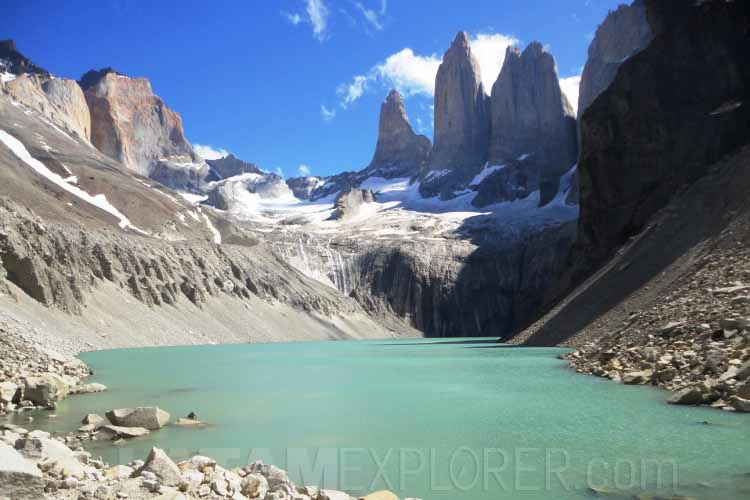
Chile is, in general, a pretty safe country by Latin-American standards and presents an excellent infra-structure for transportation. Highways, frequently tolled, are usually well kept and allow for a good driving experience. Even within Santiago there are toll expressways charging a rate proportional to the distance covered for local vehicles or a fixed daily rate for vehicles not subscribed to the system. Nice, frequent buses connect the main cities of the country. Planes also cover the greater distances, besides connecting the continent to Easter Island. It is also possible to use the rail network to cover a few segments of the country, particularly between Santiago and Chillán, although trains are usually slower and more expensive than buses.
DESTINATIONS IN CHILE:
